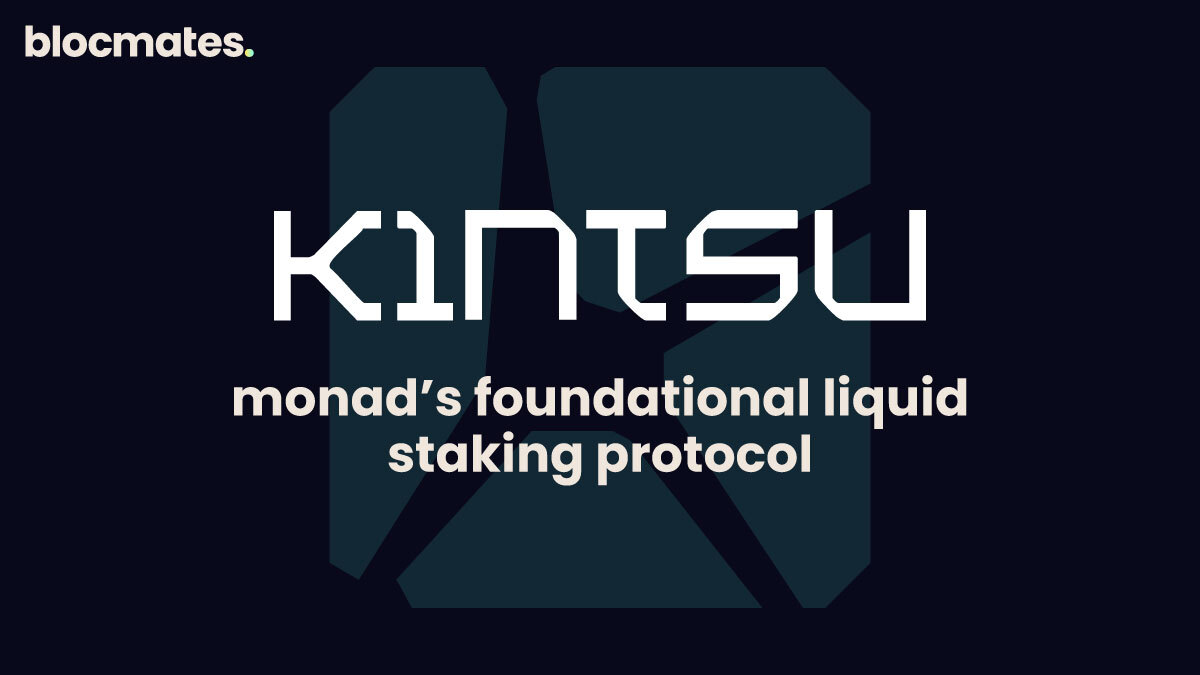It’s no secret that 2022 was one of the most turbulent years in the crypto industry. From the LUNA collapse to Celsius & Blockfi going under, to the 3AC blow-up, and finally the FTX collapse which was the icing on the cake.
For all the pain this caused, it taught all of us to respect the core values upon which this entire industry was built. You already know the saying “Don’t Trust, Verify”. We built a trustless system yet ended up getting hurt by entities in which we instilled our trust.
In hindsight it is easy to say “never again”, however, at that moment we simply had no better alternatives. CEXs such as FTX simply provided a superior trading experience to existing DEXs which is why people used them.
However, as one door closes another one opens. The FTX collapse unsurprisingly created a huge gap in the market, people want the CEX-like trading experience without the risks of custody and trust. Not many products existed before, but now competition in this space is heating up.
There is one player on this battlefield that looks primed to take over, and that player is Vertex.
Now if you have been keeping up with what we’ve been doing at Blocmates, then you may already know that we have extensively covered Vertex before. If you haven’t read that then I’d highly recommend checking it out before reading this one.
Done? Okay.
So now hopefully you’re primed on how Vertex works and why it has the potential to be one of the leading DEXs in this industry.
Today, we wanted to give you a potential fair value for Vertex and the VRTX token. Granted that it is still in testnet, but with mainnet coming up soon it would be worth keeping potential targets in mind of how big this could be.
So before jumping into the analysis, let me quickly refresh your memory on the VRTX tokenomics.
VRTX Token
The VRTX token itself is a governance token. I’m sure most of you are familiar with how governance tokens work, but the real value for the token is derived from its two sub-types:
· xVRTX
· voVRTX
xVRTX is the token you receive for staking VRTX. However, unlike other staking tokens, this one is transferrable, making it like a liquid staking token. xVRTX gives you 2 key benefits. One is voting power following the 1 xVRTX = 1 vote format. The other benefit is getting a proportional share of the protocol's revenue and emissions.
voVRTX is a non-transferable token. What it represents can be thought of as a user's score in the Vertex protocol. When users use more VRTX for trading fees or stake their xVRTX in the insurance fund, they get a higher voVRTX balance. The balance signifies how much a user can boost their rewards across the protocol.
The total VRTX supply is 1,000,000,000.
And 90% of this fixed supply of 1 billion tokens will be distributed over a period of 5 years. These tokens will start getting distributed 6 months after the mainnet launch and the distribution will look like this.

In the initial phases of the launch, Vertex will be running an incentive program named the Vertex Trading Incentive Program (VTIP). The purpose of this program is to incentivise liquidity and activity on the platform where users will get rewarded for performing certain tasks on the protocol.
The basic premise is to trade more and earn more. But if we go into a little more detail then this VTIP is broken down into two phases, the initial airdrop & the token emissions. This will make up for 46% of the VRTX supply.
· Initial Airdrop – 9%
· Token Emissions – 37%
The initial airdrop phase will happen within the first 6 months and users will be rewarded for using different aspects of the protocol and augmenting liquidity on Vertex. This 9% supply will be distributed to traders proportional to their usage and contribution to the protocol from the Asset Reward Pool (ARP) using the following calculations.

The main difference with the token emission phase is that it will start only 6 months after the mainnet launch. The tokens accrued here can immediately be vested/claimed at a 50% discount where the underlying tokens will be burned, or if users choose not to then it will be vested continually over 3 months. It will take a total of 6 years for the entire 37% to be distributed.
Now that you’ve understood the crux of tokenomics, let’s get into the fun part, giving the VRTX token a potential fair value.
Analysis
Of course, Vertex is still currently in testnet. So we do not actually know what the volumes will be. Therefore, we will look at 3 scenarios. The low ball, the mid-curve, and the optimistic degens' value.
Since Vertex has a capped supply with a fixed emission schedule, this article will look at the fair value after the first year of the token being live. The findings can then be extrapolated and adjusted to meet your time horizon.
Okay, no more chit-chat, let’s get into it.
The low ball
To better understand Vertex’s value, let's compare it to existing DEXs. Newer DEXs such as Vela (a GMX fork) has an average daily volume (ADV) of $90M since inception. For simplicity's sake, we can round this up to $100M ADV and get a conservative estimate of what VRTX holders could earn once the platform is live.
At this level, Vela still has a market cap of $43M, which, when applied to Vertex, is already around 2x the launch price. Using the same $100M ADV, we can try and estimate the return that stakers will see.
With $100M ADV Vela has a marketcap of $43M, it also generated an estimated $38M in fees for stakers or $883K per day. These rewards are paid out to stakers at 20% APR, therefore, to understand what rewards VRTX stakers would see, we’ll take the same 20% APR as a ballpark figure since that seems to be the accepted industry standard.
We will also assume a staking participation rate of 85% which is what GMX has right now. Of course, the GMX staking mechanism is vastly different and uniquely allows them to have a high staking rate, so expect the VRTX staking rate to be lower in practice, but for the sake of this model, we will assume 85%.
Now if we plug in all the numbers, at the launch price of $0.10 this is what we get.

The average daily fees generated for stakers would be $25,000 or $9.1M annualized. An investment of $10,000 would then yield you a daily reward of $13 or $4.8k annualized. But this also means an APR of 48.3% which is a little high.
When adjusted for a 20% APR, this is what we get

As you can see, it would be a 2.5x multiple on price at $0.25 and your annualized rewards would decrease to around $2k on the same investment.
Again, if the staking participation is lower then the APR will be higher, so more returns on your initial capital.
If you would like to use the calculator as a reference to play around with your own variable then please feel free to make a copy of the sheet below.
https://docs.google.com/spreadsheets/d/1wRKKpqLmPyRTPMILlo1TEO7axiHX2q0_d9axp6SN3iM/edit?usp=sharing
When we see more price data, volume, staking participation rates etc. we can then refer to this calculator to continually work out a rough fair price for the token.
The mid-curve
A fair comparison for this range is GMX. GMX has an ADV of $416M currently, so for this middle-range estimate we will take $500M ADV as an estimate. Since it's been live, GMX has generated a total of $112M in fees. This means on a daily volume of $500M, the platform generates $577K per day. Now let’s apply this to VRTX and see what we get.
GMX currently has a market cap of $630M. So if we apply this to VRTX, it will roughly be 5.7x from the launch price. This means you’re looking at a potential fair value of $2.85 if Vertex can achieve the $500m ADV.
Applying the same assumptions as we did above, let’s take a look at what stakers could potentially make as rewards at these levels.
At the launch price of $0.10, you would see something like this.

An average daily fee of $125K was generated for stakers which translated to $45.6M annualized. Your $10K investment would yield $60 a day or $24K annualized. But yet again, as you can see, we have a 241% APR which is way too high. It is almost certain that new stakers would flood in at such juicy APRs, therefore, diluting the return.
Therefore, when adjusted for a 20% APR, we get something like this.

Your annualized returns on your personal position come down to $2k, but you will see a 12x multiple on price which would be $1.20.
The optimistic degen
For the higher side estimate, a fair comparison would be dYdX which is the leading perp DEX in DeFi. Over the last 365 days, dYdX has done an average of $1B ADV which is why for the optimistic estimate we will be using exactly that figure.
On this ADV, dYdX generated $105M in fees on the platform or $287K per day for stakers. Now if we apply the same $1B ADV to VRTX, you would get something like this.

You would see the appealing average daily fees of $250K being generated for stakers which is $91.2M annualized, absolutely insane. At these levels, you also see an APR of 483% yielding you $48.3K a year which is of course absurdly high.
Therefore, when adjusted for 20% APR, we get something like this.

Your annualized return would of course be $2k and the price would see a 24x multiple at $2.40. After using the testnet, it is up to you to decide whether a $1B ADV seems realistic or not. dYdX consecutively hit $1bn+ in trading volume during the last cycle. Even now it hits a standard of around $500m ADV.
Given the low barrier to entry of Vertex being deployed on Arbitrum this could be achievable, the question is when?
Concluding thoughts
Before ending this article, I would like to reiterate that these are all purely estimates of potential. Vertex is still in testnet so we do not know for sure how things will play out once it’s live. This shouldn’t be considered as financial advice of any kind but more so a mental framework of how to look at the VRTX token once it's live on mainnet.
Also, with the estimates given above, I understand that there are a lot of variables at play, but to take every single one into account would make this article as long as a PhD Thesis, so for the sake of simplicity we have given you this broad estimation model.















.webp)

.webp)
.webp)

%20(1).webp)



























































%202.webp)


.webp)

.webp)
.webp)
.webp)



.webp)












%20the%20Next%20Big%20Unlock%20in%20AI.webp)



.webp)
.webp)

.webp)
.webp)
.webp)


.webp)
.webp)










.webp)


.webp)









.webp)







.webp)




.webp)


























.webp)







.webp)















.webp)

.webp)
.webp)

.webp)














.webp)

.webp)


.webp)








.webp)




